NULLNULL STUDIO
Sayoko Suwabe
Hideki Kimishima
Sayoko Suwabe:
The impetus was not a “Let’s do it together” kind of thing, but rather, we both happened to take a leave of absence to go study abroad in 2020, but it was postponed, so we started looking for a place to keep our stuff and a space to create in the meantime. At the time, we believed we would be able to go right away, but…
Hideki Kimishima:
This place used to be used by people Woodworking studies, and it looks like it’s been vacant for a while. The fact that we were allowed to use it freely was a major deciding factor in us moving in. It took us three or four months to build the walls, and both of us were very particular about the color of the curtains, the flooring, the lighting, and so on….
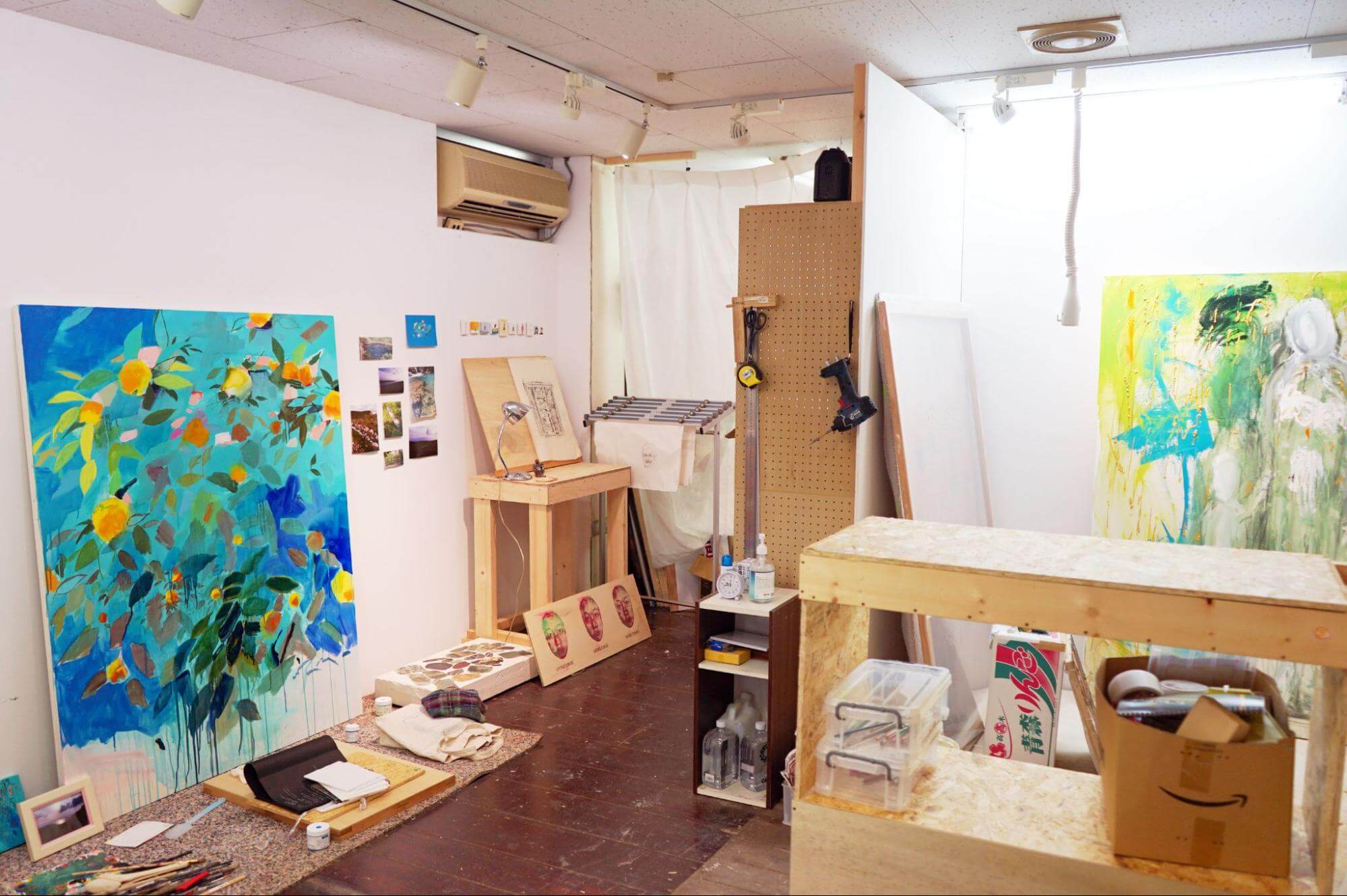
Kimishima:
I have loved drawing pictures and making things since I was a child. I was blessed with teachers at elementary, junior high, and high schools, as well as instructors at preparatory schools, who taught me enthusiastically. I took the primary examination in the Department of Oil Painting on a trial basis, and somehow I passed it. I failed the second exam, though. . I oddly started to think if I retake it a year, I would take a place. A year later, I was able to successfully enter the school.
Suwabe and I were classmates in the oil painting department. We met for the first time during group work at a welcome party for new students, and since then we often plan events together.
Suwabe:
We had a softball tournament, and we also had a Costco deli vs. Kimishima’s cooking. We called it a showdown between American capitalism and home cooking.
Kimishima:
I am good at cooking, so I do it every chance I get. For example, I made pot-au-feu for 80 people at a reception for an off-campus exhibition. I also cook hotpot and paella when everyone gathers at my house.
Suwabe:
It was called “Pae Jima”, wasn’t it?
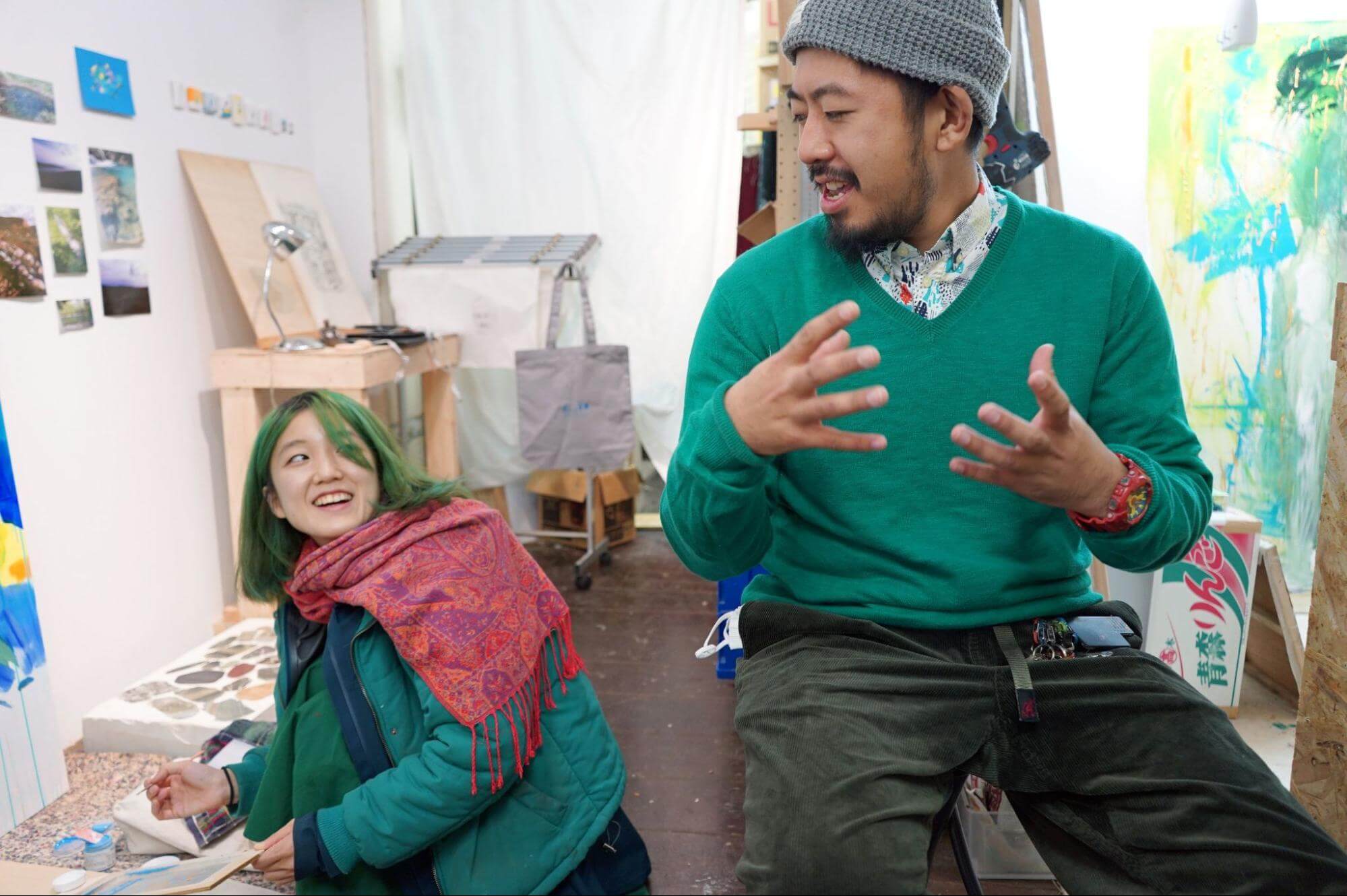
Kimishima:
I gradually began to incorporate cooking into my work. For the past two years, I have organized a “Bento Workshop” for children. In the workshop, children place stones, sand, and other natural materials in a bento box as if they were side dishes. At the end of the workshop, we ask the participants to write labels on their lunch boxes. It was interesting to see labels like “100 Million Yen Bento” or “Jewelry Bento. There were even some who wrote “Uber Eats” on their labels and delivered them to people.
It was interesting to see how creatively they interpreted bento just by presenting it to them. I would like to try adding more materials to the bento box, and I would like to try using more creative bento boxes.
Suwabe:
One interesting thing that Kimishima-kun says is that cooking is painting and painting is cooking.
Kimishima:
That’s right. If you buy potatoes, carrots, and meat, you can make curry, meat and potatoes, and many other things. It is similar to choosing brushes and paints, and then deciding what kind of artwork to create with the materials. I wonder what kind of taste it will have if I mix the ingredients. Cooking and making things are similar in some ways.
I have been cooking since I was a child, and this has led to my work. Some of my works use cooking as a motif, while others are created with the sensation of making food. I would like to keep this as one of the core elements of my work.


Suwabe:
I started drawing when I was in kindergarten. I had an elderly man teacher who was a contemporary artist close to me. When he was young, he was such a person who did interesting things, like driving dump trucks on paper. At first I painted seriously with him, but then I became more and more interested in art itself. It was important for me to know that there was a world where expressing myself was a normal thing to do. It helped me to make the choices I have made in life.
Even as a child, I had the personality of a clown. In that group, I always made up my own ideas of what would be interesting if there were people like that. When it came time for me to think about what I was going to do, I decided to go into the art world, which I had been unable to turn away from since I was a child.
I would love to have a moment in my life when my thinking changes drastically. Or I think that is why I create my artwork, because I want to do something that will change someone’s way of thinking.
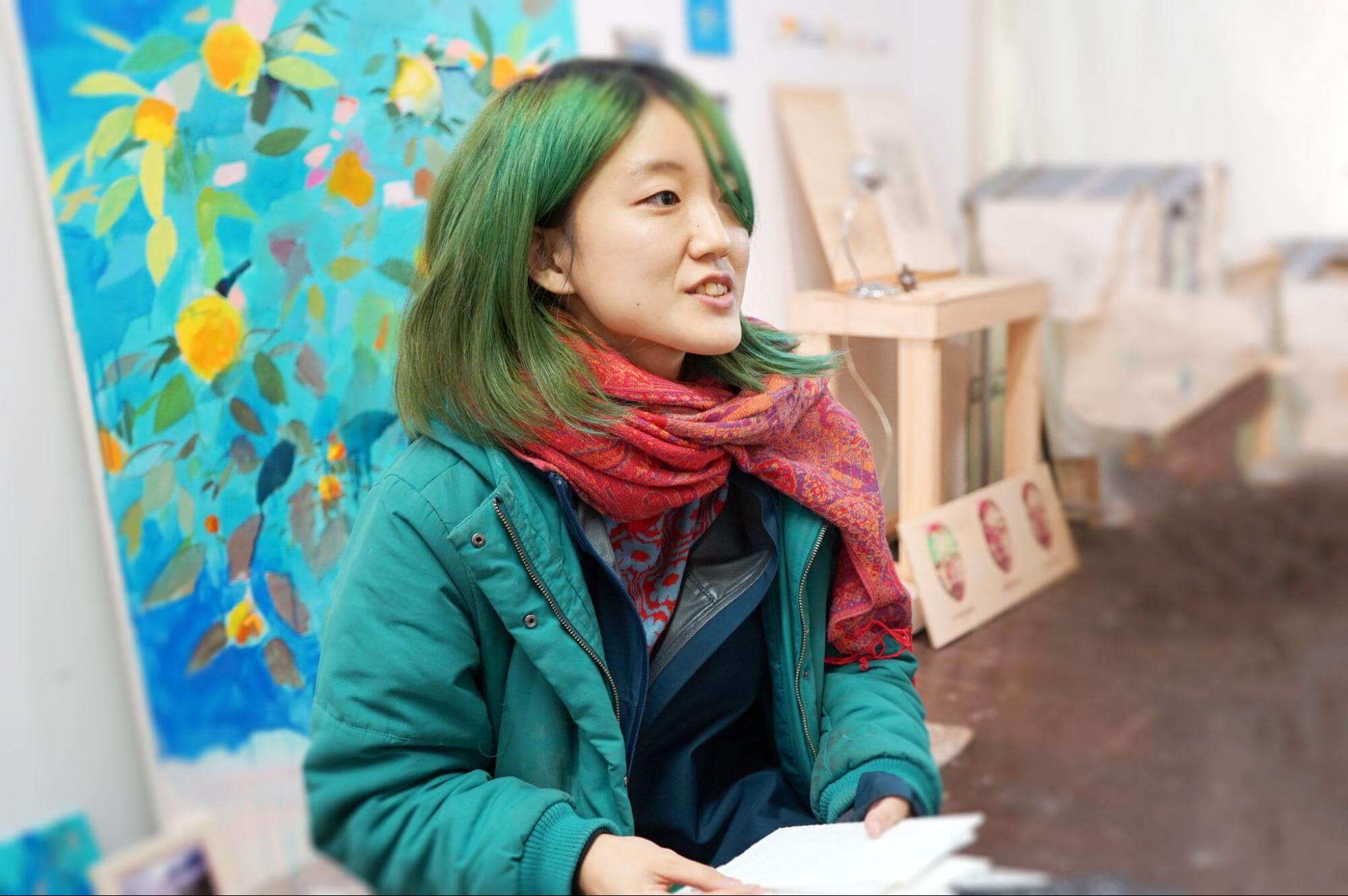
Kimishima-kun talked about painting as cooking, but I see painting as a temporary art. Painting is a medium that inevitably involves time, and I think it is something that continues to change.
However, nowadays, only certain moments are cut out and distributed on the Internet and in our minds. For instance, when we imagine the Mona Lisa, the image that appears on the Internet pops into our minds. I think that is a very strange structure. What we call a painting is an image of a few pixels? I think it’s a very strange structure. I think that is what led me to the final project I am working on now.
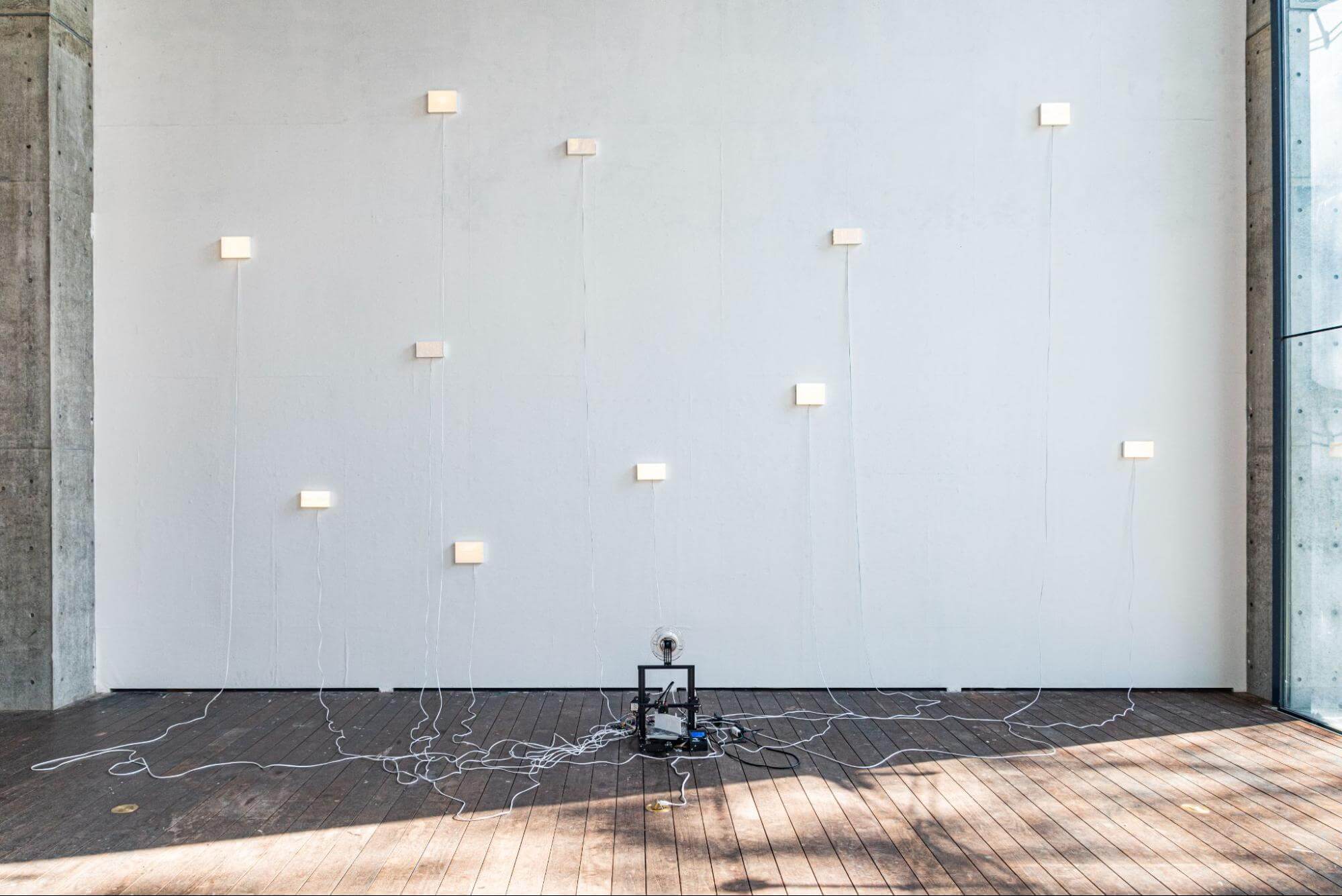 © Global Art Practice, Graduate School of Fine Arts, Tokyo University of the Arts, 2021Photo: Kenta Kawagoe
© Global Art Practice, Graduate School of Fine Arts, Tokyo University of the Arts, 2021Photo: Kenta Kawagoe
My production cycle begins with a “Huh? and I want to put it into words, but I can’t do it. I have to create something in order to take the idea one step further. This cycle repeats itself over and over again. I believe that there is always something that can only be conveyed through art. That is why I cannot leave.
The most frightening thing for me is to stop thinking. To stop thinking. One of the things that makes me breathe is the cycle of creating art.
Recently, when I create a work of art, I often think about who it belongs to. “Not for Sale” event at VIVA was an experiment to see what kind of value our work would have when exposed to the viewpoints of others.
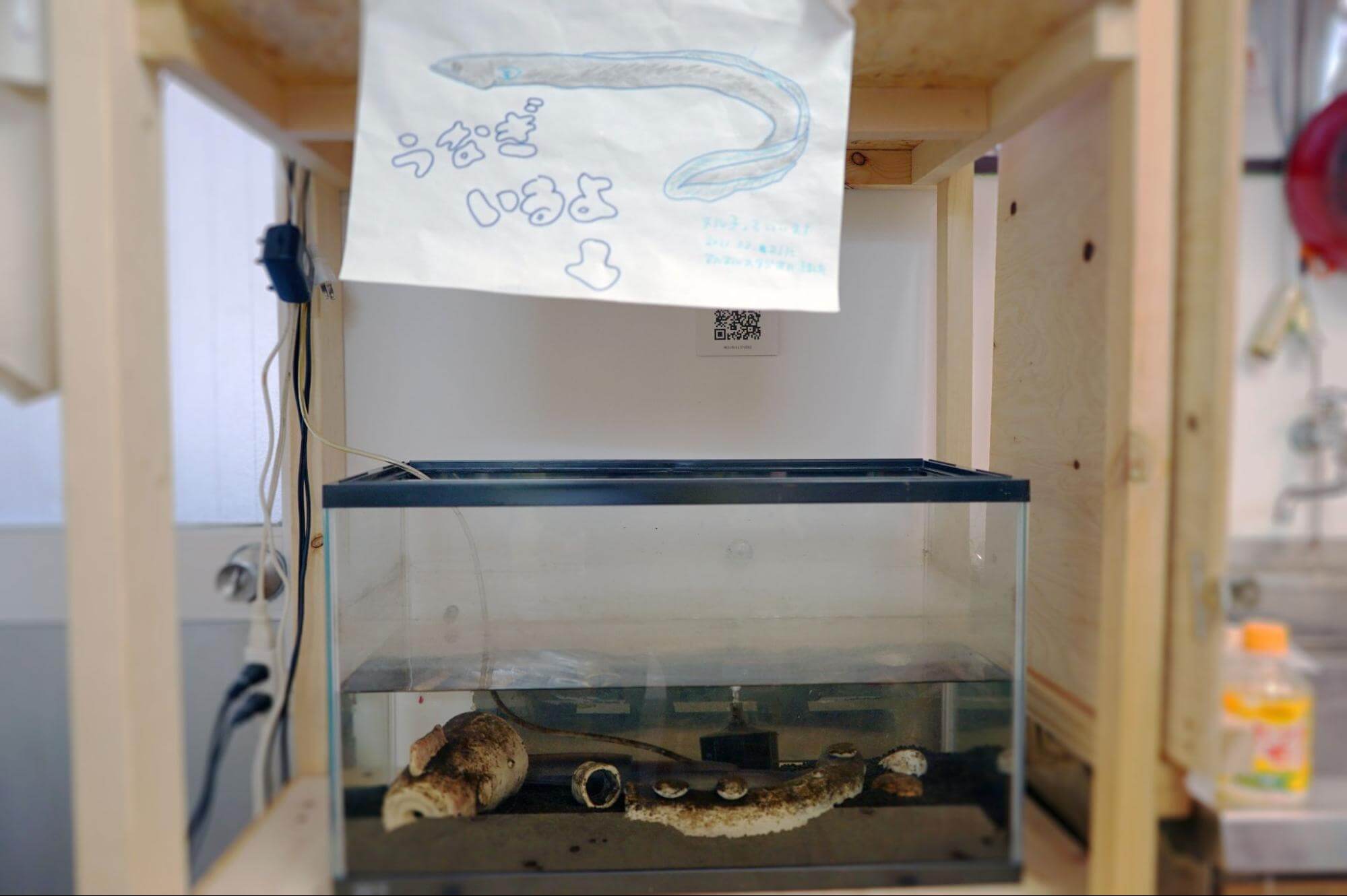
Suwabe:
We definitely want to do the workshops that we couldn’t do at VIVA.
Kimishima:
Yes, that’s right. In the near future.
Suwabe:
Also, NULL NULL STUDIO, I would like to expand. In the great future, it would be great if we can make it a place where neighborhood kids can gather all the time.
Kimishima:
I think we both do things other than painting, so if we had the space,, there are many things we would like to do.
Suwabe:
Our goals are completely different. Our ideas are completely different, so we have an unspoken agreement not to interfere with each other’s work. No negativity. We respect each other and what we want to do. When we find something in common, we sometimes create the same thing.
Kimishima:
I think we are in a relationship where we share our skills, or rather, we share our respective strengths. I am not good at writing, but Suwabe is. We came up with the ideas and made the furniture we use here ourselves.
Suwabe:
Thank you very much for coming today, we have printedNULL NULL STUDIO logo on an ecobag, so if you like, you can keep this as a souvenir. It’s Christmas Eve today!
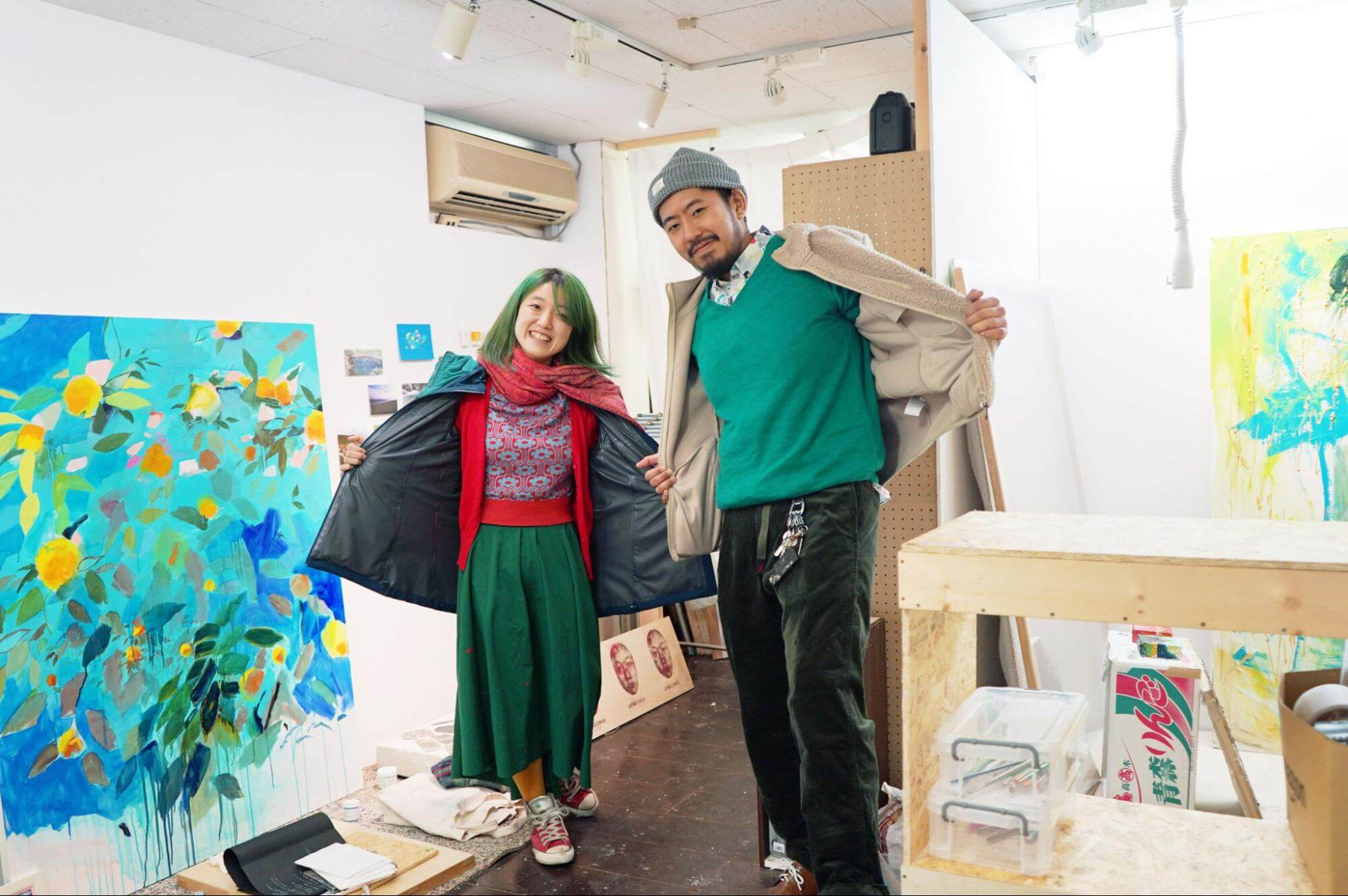 メリークリスマスイブ!
メリークリスマスイブ!
NULL NULL STUDIO
-
Sayoko Suwabe
Suwabe’s career as a painter began as a response to questions about the creation, persistence, and disappearance of images in her installations. Her works play with the fluctuations and hints of the space. In Toride, she is involved in “After School Art Time” as an artist, in addition to her activities at VIVA.
-
Hideki Kimishima
Born in 1995 in Kanagawa
Graduated from Tokyo University of the Arts, Department of Painting, Oil Painting in 2019.
Completed the Mural Painting Course in Oil Painting, Graduate School of Fine Arts, Tokyo University of the Arts in 2022.
Inspired by the lunchboxes his grandmother used to make for him, he combines natural materials such as stone, plaster, clay, and straw to create her works. He considers the bento boxes, which are made by combining various side dishes, to be similar to artworks, and engages in painting, sculpture, workshops, and other creative activities. Recently, in order to further explore the value of materials by focusing on the possibilities of contemporary art using natural materials, he has been unraveling the ancient relationship between stone and earth, and creating my own Jomon period works.